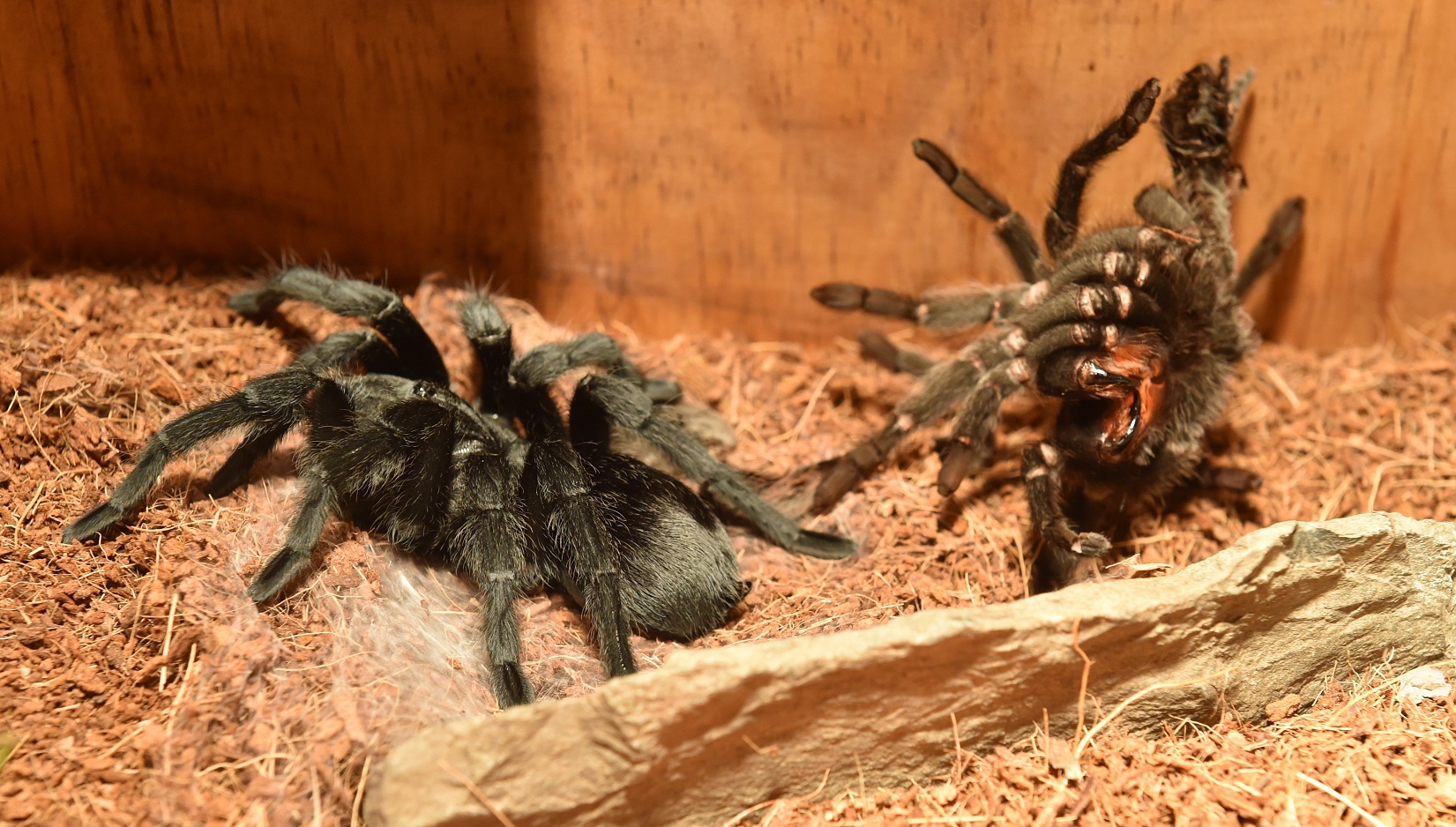
The female Brazilian black tarantula at the Tuhura Otago Museum shed its exoskeleton last week.
Otago Museum living environments co-ordinator Dr Tony Stumbo said moulting was a natural process that tarantulas and other spiders went through in order to grow.
"Humans, we grow — our bones grow with us.
"Spiders have exoskeletons, they don’t have true skeletons.
"So as their body grows and ages they don’t replenish their exoskeleton — instead they will shed it and have a new one underneath."
He said that due to the spider’s age, her moulting had become less frequent.
"When they’re very young, they start out teeny — just a few millimetres [in size] — and they’ll moult quite often.
"Then the older they get, they’ll get down to a few times a year, and now it’s at about once a year for these ones because they are getting up there in age."
A few weeks before a tarantula moults, it stops eating and loses the hairs that normally cover its abdomen.
When ready, it lies down on its back, appearing dead.
It then sheds its exoskeleton — the whole process taking between 12 and 24 hours.
Following a moult, tarantulas were very vulnerable for "a week or two", Dr Stumbo said.
"The exoskeleton, in the first week or two, is just quite soft.
"It has to be quite malleable to actually pull itself out of the old exoskeleton.
"So over that week or two it just needs time to harden and get nice and rigid."
He said the spider would remain inactive and had laid down webbing to stop any pests from hurting her.
Moulting was the most noticeable change the spiders went through — she would appear a "brilliant black colour" due to losing the hairs on her exoskeleton.
The tarantula would be left unfed and undisturbed as her skin and fangs hardened, Dr Stumbo said.
By Nic Duff












